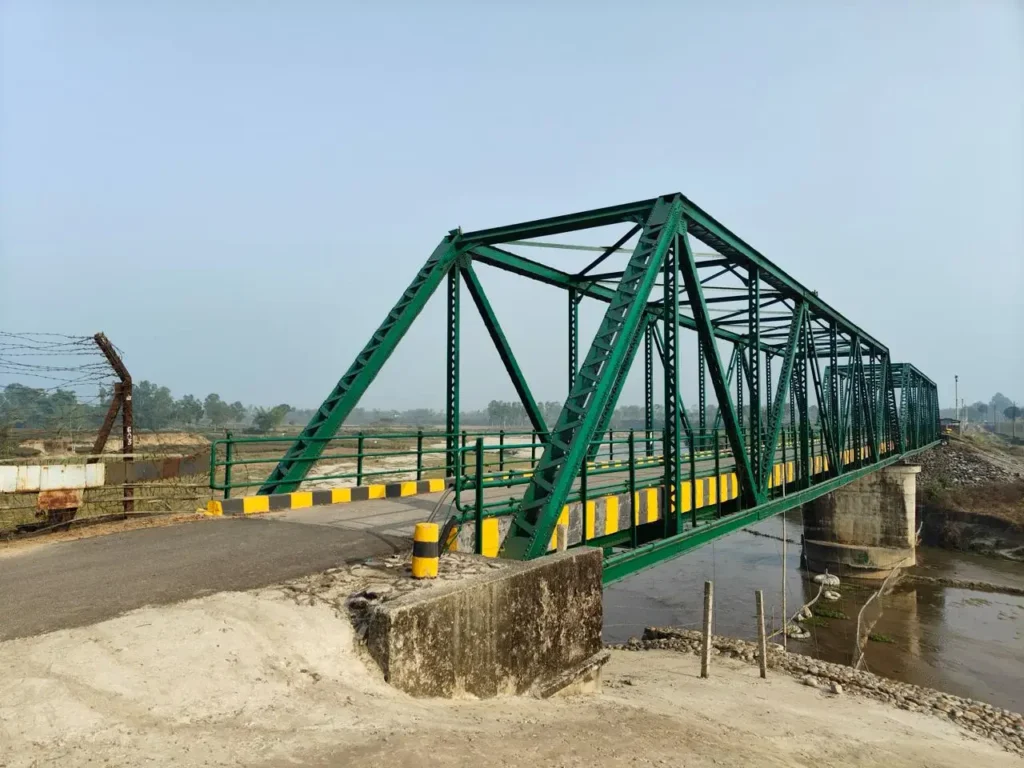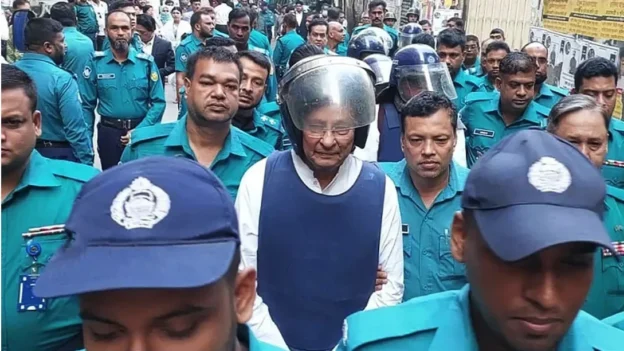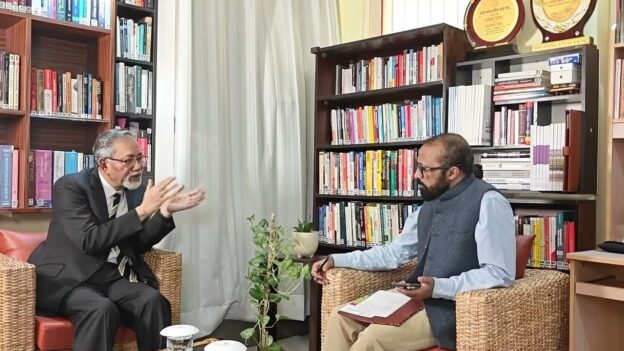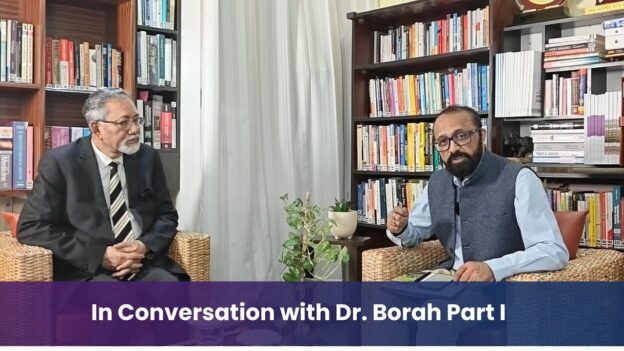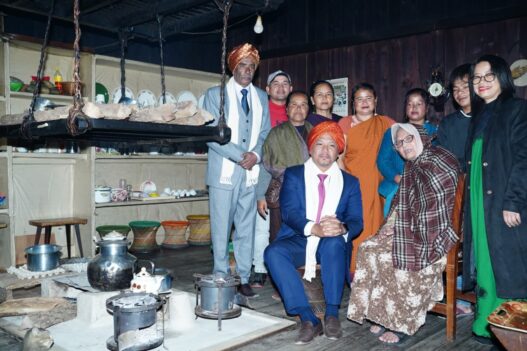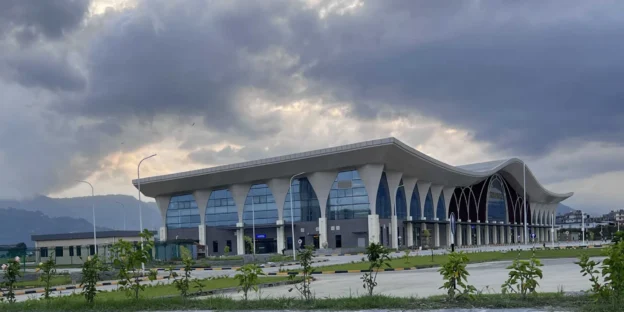It began as a search for history. We were in Gosainmari, a small village in Cooch Behar district of North Bengal, known among archaeologists as the site of ancient Kamatapur—the long-lost capital of the Kamata Kingdom. Yet the ruins offered few clues. The mounds lay silent, their stories buried beneath grass and centuries of forgetting. After hours of wandering through the fields and asking locals if anyone knew of old records or folk memories, we found little more than puzzled looks and polite shrugs. Then, just as we were about to leave, we noticed a mali—a gardener—perched on top of one of the grassy ruins, quietly cutting the overgrowth with a sickle. Hoping he might know something, we asked him about the place. He looked up, smiled, and replied with disarming candour, “I don’t know anything about it. I’m from Bangladesh.”
The honesty caught us off guard—and brought a smile. Here was a man who had crossed a heavily guarded border, working openly without fear. He said he had been in the area for three years. “I work and earn and will go back when asked to,” he shrugged. “I don’t think there is anything wrong with that.”
His words—simple, unguarded—spoke volumes. In another setting, migration experts might call his logic humane and practical. Yet in India’s border states, especially Assam and now parts of North Bengal, the same story provokes fierce debate about infiltration, demography, and belonging.
North Bengal’s porous frontier
India and Bangladesh share a 4,096-kilometre border—one of the longest and most complex in the world. Despite fencing nearly 3,200 kilometres, the frontier remains porous. Rivers, tea estates, and settlements cut across the line; for generations, people have moved freely between the two sides. India claims to have pushed back thousands of undocumented migrants since the 1980s, but movement continues—driven by work, kinship, and necessity.
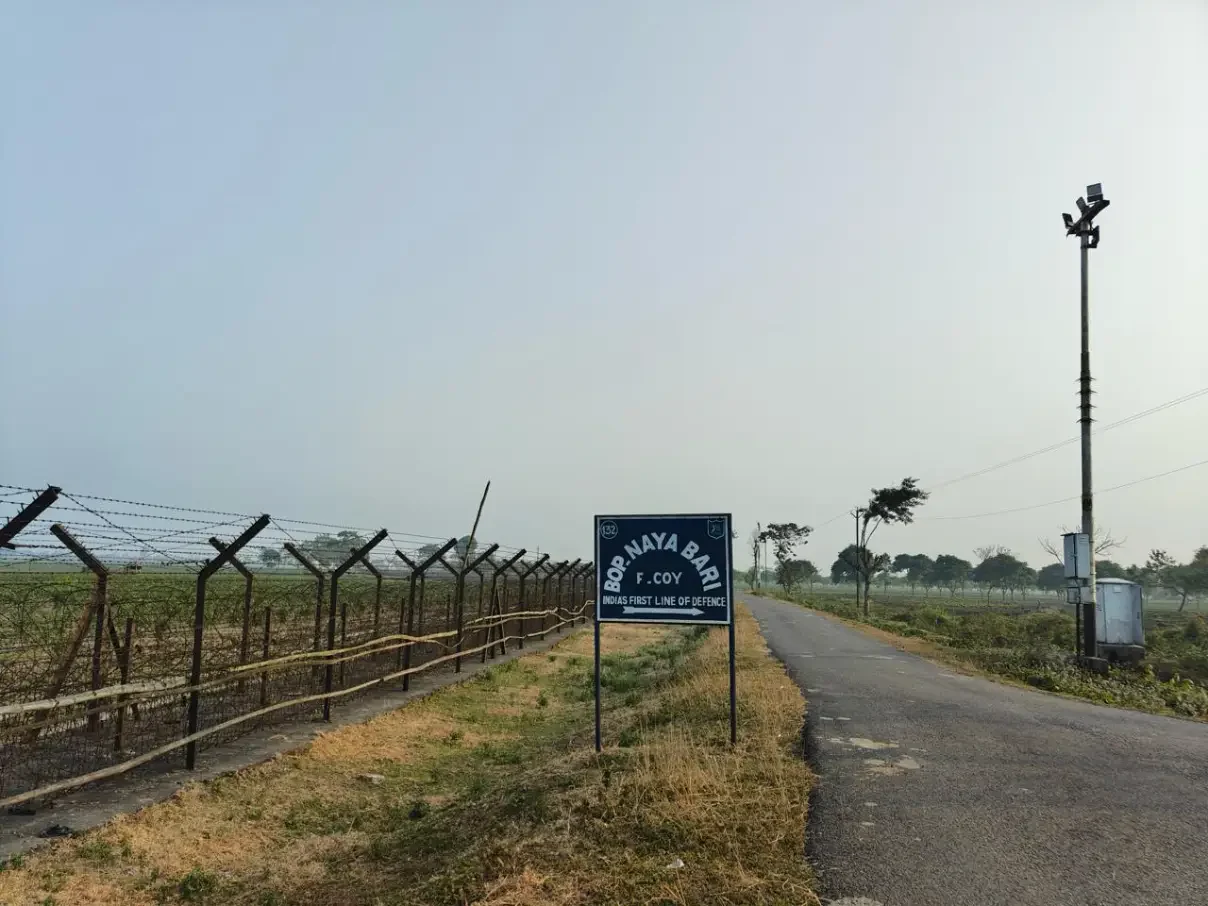
In North Bengal, especially around Cooch Behar, Alipurduar, and the approaches to Siliguri, migration is woven into daily life. The borderlands here are a patchwork of riverine channels, forests, and tea gardens, often criss-crossed by tracks used for both trade and transit. Drivers of newly introduced tomtoms—slow three-wheelers buzzing through Siliguri’s lanes—often turn out to be from Rajshahi or Rangpur divisions across the border. A few admit it casually, their accent giving them away. “I am from Bangladesh,” one said during a routine chat, as if confessing to nothing more serious than homesickness.
For locals, reactions are mixed. Some view them like the mali at Gosainmari—harmless, hardworking, intent on returning home. Others are wary. Scholars and journalists warn that many who cross “come with the intention to stay.” They point to a pattern of quiet settlement, gradual inclusion in voter rolls, and the political patronage that follows.
Borders within Siliguri
These anxieties are most visible in Siliguri, the commercial hub linking India’s northeast with the rest of the country. Over the years, migrants—both documented and undocumented—have settled in localities like Lenin Colony, where nationality often remains a whispered question. Journalists estimate that more than a million undocumented Bangladeshis may be living in and around the city, though official figures are uncertain and heavily contested.
Local reports have identified neighbourhoods with dense migrant populations but also highlighted official denials of “illegal immigrants.” Local authorities insist many residents are Indian citizens or long-settled refugees. Yet, as one reporter observed, “what begins as temporary labour often ends in permanent residence.”
Fencing along the Teen Bigha in the Cooch Behar District of West Bengal along the India-Bangladesh border. (Video credit : The Borderlens)
The visible outcome is a slow ghettoisation of Siliguri’s urban landscape. “Ghettoisation has been increasing here, which was not the case earlier,” said Ashutosh, a businessman from the city. “Suddenly there’s a display of communal sentiment at every opportunity—as if each side is flexing its muscle.” Religion, once peripheral to Siliguri’s identity, now shadows its civic life.
Farther north, in Alipurduar and Cooch Behar, the story is similar. Both districts—criss-crossed by rivers, forests, and tea gardens—remain transit corridors for migrants from Rajshahi, Rangpur, Khulna, and Sylhet. Locals recount how occasional confessions from workers or drivers—“Ami Bangladesh theke esechi” (I came from Bangladesh)—no longer shock anyone. Economic necessity has blurred boundaries, while politics has turned them into dividing lines.
Assam’s shadow
No region in India feels this anxiety more deeply than Assam. The fear of demographic change, born of colonial-era migration, fuelled the anti-foreigner agitation of the 1970s and led to the 1985 Assam Accord. Its key clause fixed 24 March 1971—the eve of Bangladesh’s independence war—as the cutoff date for citizenship. Anyone arriving after that would be an illegal immigrant.
That framework still drives Assam’s politics. The NRC—hailed as the Accord’s fulfilment—ended up excluding 1.9 million people when the final list appeared in 2019. Families were torn apart; some members counted as citizens, others branded foreigners. The Foreigners Tribunals (FTs) deepened the crisis, producing contradictory verdicts and arbitrary detentions.
Recent arrests in Goalpara, Kamrup, and Morigaon revived the sense of dread. In one case, five brothers found themselves split by law: three Indian, two foreign. “How can that be possible?” their elder brother asked helplessly. Another, Khairul Islam, a retired teacher, was detained and later returned home under unclear circumstances—while others arrested with him remain behind the fences of the Matia detention centre.
The Gauhati High Court has intervened repeatedly, seeking transparency and due process. Chief Minister Himanta Biswa Sarma insists only those who fail to appeal FT verdicts will be deported. Yet for many families, the distinction between “foreigner” and “citizen” has dissolved into bureaucratic fog.
Pushbacks and diplomatic friction
Beyond Assam, migration politics have spread westward into Bengal. Here, too, the debate divides parties: the BJP accuses the ruling Trinamool Congress of shielding “infiltrators,” while TMC leaders call such rhetoric divisive. Decades of movement—first as colonial labour, later as refugees from 1971, and now as economic migrants—have blurred the lines of origin and belonging.
Against this backdrop, India has renewed its pressure on Dhaka. On May 22, New Delhi formally asked Bangladesh to verify the nationality of 2,369 people identified as illegal migrants awaiting deportation. “We have a pending list,” External Affairs Ministry spokesperson Randhir Jaiswal said, urging Dhaka to expedite verification so that deportations could proceed.
The timing was delicate. Bilateral ties had soured after former Prime Minister Sheikh Hasina fled to India in August 2024 following massive protests in Dhaka. The new interim government under Muhammad Yunus has struggled with unrest and attacks on minorities, while resisting Indian pressure on migration.
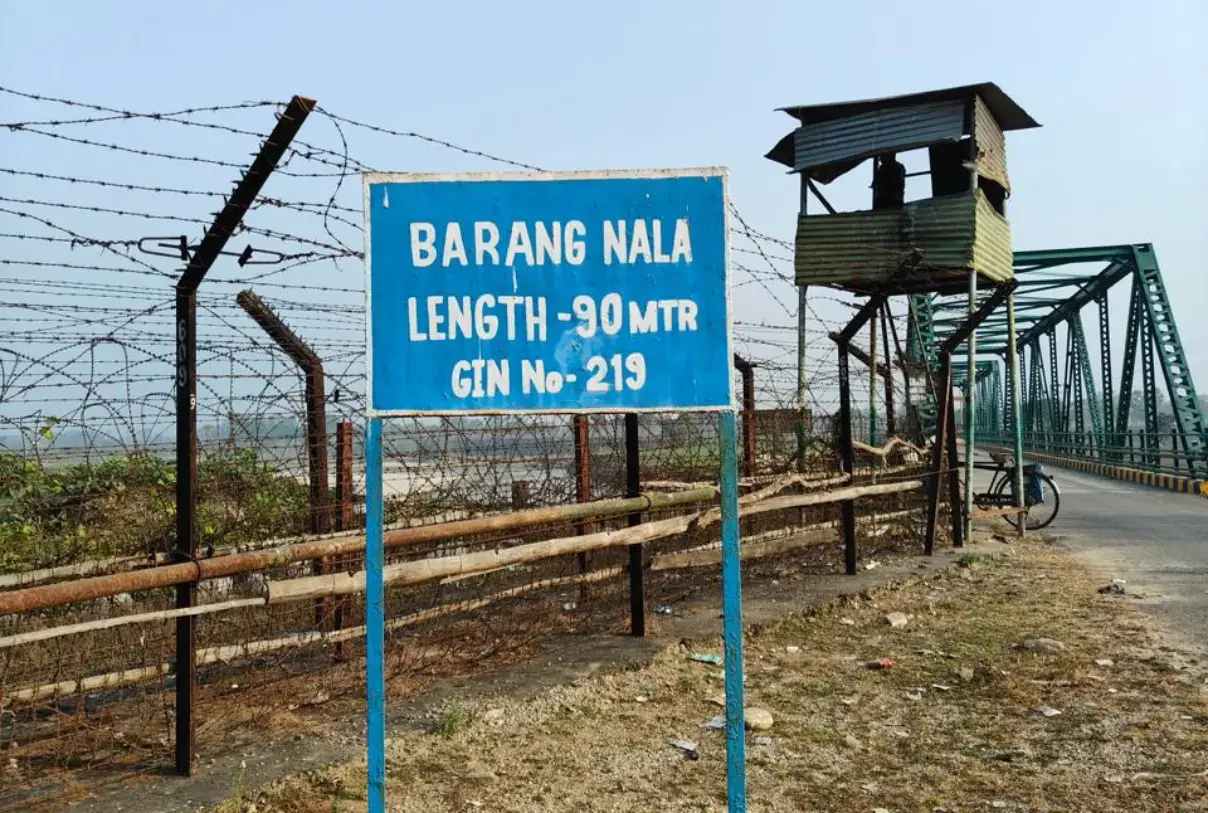
Since early May, over 2,000 people have reportedly been “pushed back” across the frontier by Indian authorities. Bangladesh, however, has begun resisting. At Lalmonirhat district, the Border Guard Bangladesh (BGB) and local villagers blocked several groups from entering, leaving 13 people—including women and infants—stranded at the zero line.
Dhaka lodged a formal protest on May 8, warning that India’s unilateral “push-ins” violated the 1975 Joint Guidelines and the 2011 Coordinated Border Management Plan. Bangladesh’s advisers on home and foreign affairs—Lt Gen (retd) Md Jahangir Alam Chowdhury, Touhid Hossain, and Khalilur Rahman—stressed that only those conclusively verified as Bangladeshi citizens would be accepted, and only through formal repatriation channels.
Chowdhury urged India to “abandon push-ins” and rely on due process: “If any Bangladeshi national is found illegally residing in India, they should be returned through the proper channels.” His comment—“If communities remain united and alert, such push-ins can be resisted”—was read as both reassurance and warning.
This marks a striking shift. Only a few years ago, Dhaka quietly cooperated in accepting deportees. Now, citing sovereignty and public sentiment, it is drawing a line. The old system of informal cooperation—quiet repatriations, back-channel diplomacy, local tolerance—is fraying.
A border that refuses to settle
For the BSF on India’s side, every night is a test of endurance. “Protecting the frontier from illegal migrants is a sovereign duty, not an option,” a senior commander said. On May 27, troops in Assam’s South Salmara–Mankachar district intercepted a group of Bangladeshis attempting to cross; the “mob subsequently retreated,” the BSF reported.
Farther west, tensions flared in West Bengal’s Malda district, where the BGB objected to India’s plan to extend fencing near Kaliachak along the Kodaliya River. BSF officers insist the boundary is clearly defined by river reference pillars and that the new fence merely fortifies vulnerable, unfenced stretches long exploited by smugglers.
Across the frontier, however, suspicion deepens. Political transitions in both countries, combined with global migration anxieties, have turned what was once a fluid human corridor into a contested security line.
Back in Gosainmari, the mali’s words still echo: “I work and earn and will go back when asked to.” Between the laws of two states and the realities of survival, his sentiment captures the paradox of this border.
North Bengal’s fields, Assam’s tribunals, and Bangladesh’s border villages are all bound by the same question—who belongs, and who decides? Until that is answered with compassion and clarity, the fences may rise higher, but the uncertainty on either side will remain.

